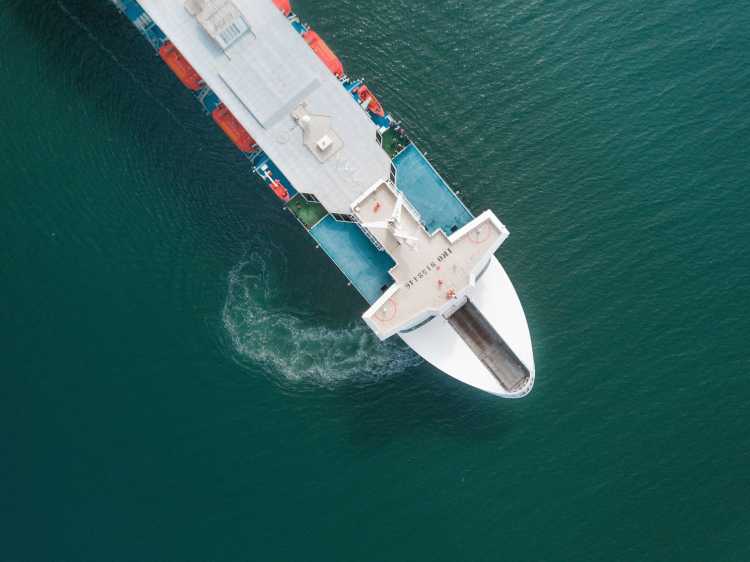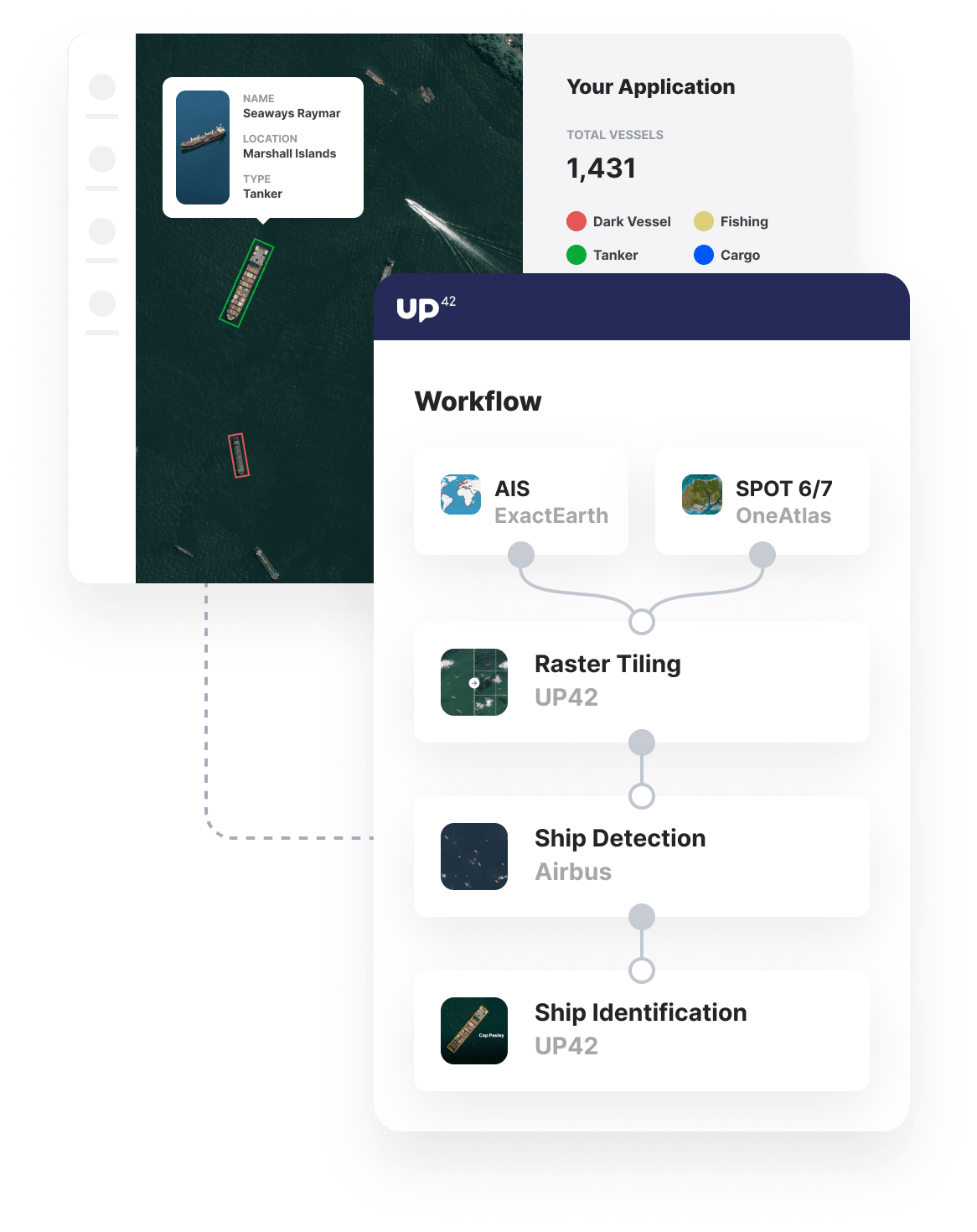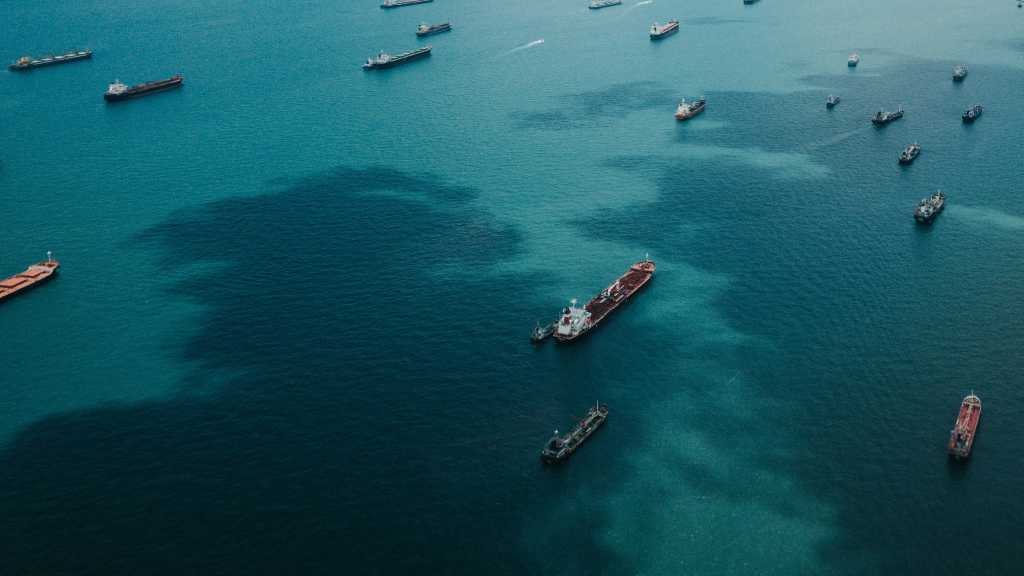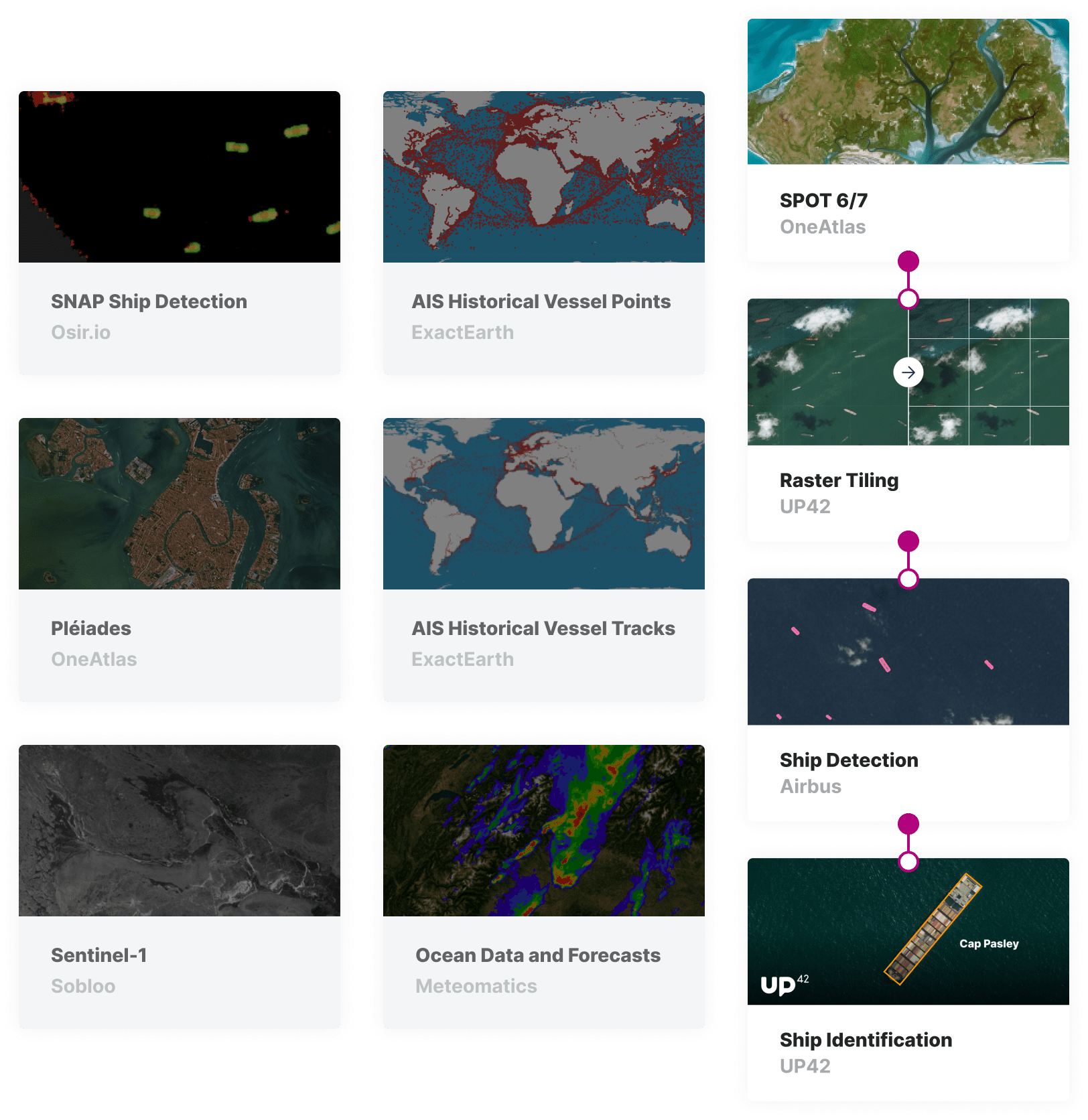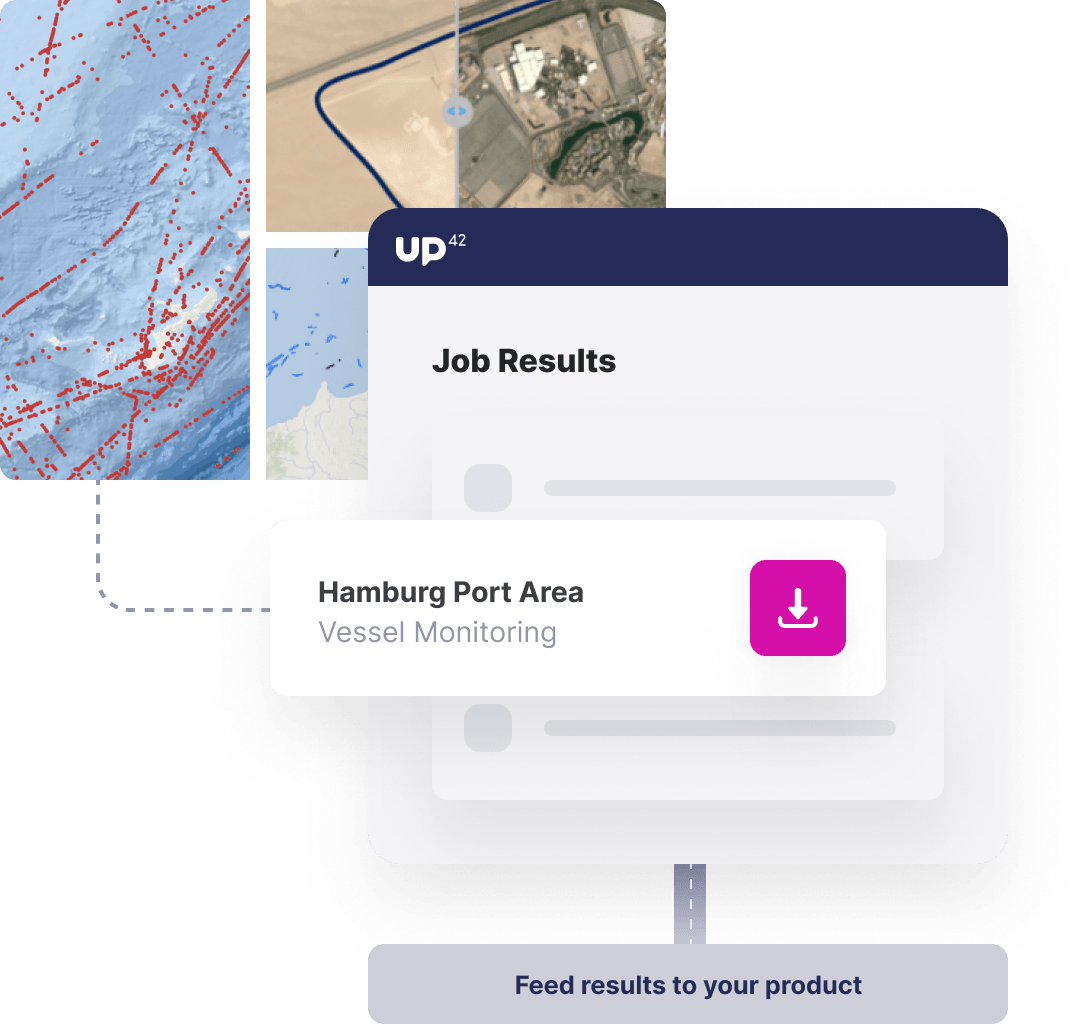High-resolution satellite imagery
Access a vast archive of SPOT 6/7 imagery with a 1.5m resolution or commission the SPOT 6/7 constellation to take images of your AOI for a given period.
Ship detection
Process your satellite imagery with machine-learning algorithms that accurately identify vessels in your area of interest.
Ship identification with AIS data
Fuse AIS data to your ship identification results to provide AIS information, such as vessel name, cargo, and destination. Identify ships without AIS data to detect potential dark vessels.
